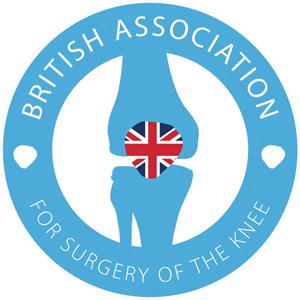Sports Injuries
Sports Injuries & Sports Injuries Clinic
Every day, millions of people in the United Kingdom participate in sports activities.
Sports activities are more than play. Participation in sports improves physical fitness, coordination, well-being and self-discipline. There is good evidence in the medical literature regarding the benefits of exercise for the general public.
Sports activities can also result in injuries. Most of these injuries are minor but some are serious. Others can become chronic and lead to lifelong problems or conditions.

- Types of knee injuries
- What First Aid is best for an injured knee?
- Do I need to see a specialist?
- Diagnosis
- Why are knee issues difficult to diagnose?
- Treatment
- Knee Biomechanics
- Knee Anatomy & Key Terms
- Knee Surgery & Keyhole Surgery
Types of knee injuries
Acute knee injuries
Acute injuries are caused by a sudden trauma. Physical trauma is the transfer of energy to the body with sufficient force to create tissue damage. This in turn causes symptoms (what the patient experiences eg pain, inability to weight bear) and physical signs of damage such as bruising, swelling, deformity. Trauma can be direct eg being punched or indirect eg twisting suddenly.
Common acute injuries among people taking part in sport include:
- Contusions (bruises)
- Sprains (a minimal partial tear of a ligament)
- Strains (a partial or complete tear of a muscle or tendon)
- Ruptures (partial or complete) of ligaments, tendons or muscles
- Intra-articular (structures within a joint) tears of such as menisci, joint surfaces, joint lining
- Fractures
- Patellar tendonitis
If an acute injury fails to settle it can become a chronic condition.
Common examples include:
- Chronic anterior cruciate deficient knee
- Chronic meniscal (cartilage) tears to knee
- Recurrent traumatic shoulder dislocations
Overuse knee injuries
Not all injuries are caused by a single, sudden twist, fall, or collision. A series of small injuries can cause minor fractures, minimal muscle tears, or progressive bone deformities, known as overuse injuries.
As an example of an overuse injury is “Tennis Elbow.” This is the term used to describe a group of common overuse injuries in caused by both racquet sports and other activities such as swimming and climbing. Other common overuse injuries can damage the tendons in heels, ankles, knees and hips.
Acute on chronic knee conditions
Diagnosis
Whether an injury is acute, acute on chronic or due to overuse, a person who develops a symptom that persists or that affects his or her athletic performance should be examined by an orthopaedic surgeon, sports injury doctor, specialist physiotherapist or osteopath.
Symptoms and signs that warrant a visit to an orthopaedic surgeon include:
- Inability to play following an acute or sudden injury
- Decreased ability to play because of chronic or long-term complications following an injury
- Visible deformity of the athlete’s arms or legs
- Severe pain from acute injuries which prevent the use of an arm or leg
- REMEMBER: Sometimes getting a definitive diagnosis may be tricky. See my section on diagnostic complexity
Treatment
Aims of treatment are:
- Restoration of normal sports function as promptly and safely as possible
- Minimising treatment time
- Minimising risk of recurrent problems
- Minimising risks / complications of any treatment
Treatment is based on:
- Identifying all the principle diagnoses (easier said than done, see my section on diagnostic complexity)
- Identifying all additional health issues which may influence the principle diagnoses (see on clinical complexity)
- Understanding of the condition and the patient “context” namely the severity of condition, presence of other conditions or medical problems
- A clear understanding of the treatment options, their success rates, potential risks and complication rates
- Clear communication with the patient, patient’s family, GP and therapists
Prompt treatment can often prevent a minor injury from becoming worse or causing permanent damage.
During the evaluation, the orthopaedic surgeon will inquire as to how the injury occurred and will examine the person. If necessary, the doctor may perform X-rays or other tests, to evaluate the bones and soft tissues.
The basic treatment for many simple injuries is often “R.I.C.E.,” or Rest, Ice, Compression, and Elevation. Additional types of treatment can be summarised by:
- Analgaesia / NSAID’s (non-steroidal anti-inflammatory drugs)
- Activity modification
- Specific exercise program
- Bracing, tubigrip, splints
- Physiotherapy treatments
- Injections cortisone / hylan
- Awareness of natural history & treatment options, Risk : benefit ratios
Operative treatments are generally reserved for cases which fail to respond to non-operative management or have a recognised likelihood of a poorer outcome without surgery.
Treatment for a person with any significant injury will usually involve specific recommendations for temporary or permanent adjustment in athletic activity.
Depending on the injury severity, treatment can range from simple observation with minor changes in athletic level through to a recommendation that the athletic activity be discontinued, pending prolonged rehabilitation or surgery.
Some combination of physical therapy, strengthening exercises, and bracing may also be prescribed. A small percentage of all sports injuries are treated by operation.
A basic component of any treatment plan is the ongoing assessment of the person’s physical condition until signs of healing and reduction of symptoms occur.
Find out more about Treatments
Knee Biomechanics
Knee injuries are common. However, some become more prevalent when participating in sports. Knee injuries can happen when making a sudden change in direction, an awkward landing, direct fall or impact, twisting or when slowing to a sudden stop. The course of treatment for an injury can range from R.I.C.E (Rest, Ice, Compression, Elevation) and strengthening to surgery, depending on what is needed to allow the knee to function properly and symptoms to resolve.
The severity of a knee injury is determined by the structures involved, as well as the activity at the time of the injury. Common injuries include an anterior cruciate ligament (ACL) tear, a cartilage (joint surface) or meniscus tear, patellar dislocation or combinations of injuries. An ACL injury can result from a direct blow to the front of the knee causing hyperextension (i.e., over straightening), a non-contact twist with hyperextension, and/or decelerating movements. Symptoms commonly present with an ACL injury include pain along the front of the knee, buckling, instability and swelling.
The signs and symptoms of a meniscus or cartilage tear often caused by a side-to-side strain to the knee while twisting, are swelling, catching, locking of the joint, as well as pain along the sides of the knee joint line where the cartilage is located. Patellar dislocation or sublaxation injuries may relate to underlying patallar maltracking issues.
Although knee injury is prevalent in the sports environment and at times can require surgical intervention, attention to knee tracking, muscle conditioning and proper biomechanics can help to prevent severe injury. Knee biomechanics incorporate the proper alignment of the knee over the second toe (i.e., the toe adjacent to the big toe) while performing weight-bearing activities like strengthening and landing.
During these strengthening exercises, the lower leg should remain vertical to the ground and positioned over the second toe. When doing stairs, lunges, squats, leg press or landings, it’s important to maintain a ninety-degree angle at the ankle and the knee. Attention should be placed on avoiding a knock-kneed or bow-legged knee position to prevent abnormal stress and possible injury.
Along with the focus on biomechanics, other knee injury prevention techniques include hip abductor strengthening, quadriceps muscle strength balance, and a motion control shoe or insole for flat feet (i.e. excessive pronation).
Knee Anatomy and Key Terms
These are all pictures of the inside of a knee.
The one most people have in their minds when they think of knee problems is the one on the right.
There are however other structures outside the joint mechanism that can and do cause symptoms and problems. This is the first of a number of issues that arise with knee conditions and patients ability to understand exactly what’s going on.
The knee is a hinge joint between the femur (thighbone) and the tibia (shinbone). The joint is protected in front by the patella (knee cap). Articular cartilage on the ends of each bone and the underside the knee cap cushions the joint. The meniscii (cartilages) further cushion abd transfer load within and through the joint. Ligaments run along the sides and front of the knee connecting the shinbone to the thighbone at the center of the knee. These components of your knee, along with the muscles of your leg, work together to manage the stress your knee receives as you walk, run and jump.
Over time, the joint surfaces and meniscus that cushion the joint can deteriorate, causing pain and stiffness when now roughened surfaces rub directly against each other.
Knee pain originally may be only felt when a person is bending or putting pressure on the knee (such as while walking or going up and down stairs). Eventually the pain may become more frequent or nearly constant.
Physical therapy, pain relieving medications or walking aids may work temporarily, but the only long-term solution in many cases may be surgery if symptoms fail to settle. In a significant proportion of people, such deterioration within the joint may cause no symptoms or problems at all.
There are two principal groups of muscles involved in the knee, the quadriceps muscles (located on the front of the thighs), which straighten the legs, and the hamstring muscles (located on the back of the thighs), which bend the leg at the knee.
Tendons are tough cords of tissue that connect muscles to bones. Ligaments are tough cords of tissue that connect bone to bone. Some ligaments on the knee provide stability and protection of the joints, some ligaments limit forward and backward movement of the tibia (shinbone).
This is what these structures look like when we visualise them directly during an arthroscopy (keyhole procedure to view the interior of the knee joint).
Knee Surgery & Keyhole Surgery
There is a wide array of knee surgery procedures, which have evolved over many years, particularly the last 20. They are being refined all the time. There are two broad groupings of surgery, open and arthroscopic (keyhole).
Surgery is undertaken for a large number of specific problems affecting the main structures within the knee most commonly the menisci (cartilages), anterior cruciate ligament, joint surfaces and other ligaments. In addition operations close to the joint can offload forces through the joint to relieve symptoms such as osteotomies.
Keyhole surgery is largely used for sports injuries to the knee involving the menisci (cartilages), joint surfaces and joint lining (synovium), and can also assist major reconstruction operations such as ACL reconstruction and osteotomies. It has limited, yet potentially, highly useful roles in the management of degenerative and arthritis conditions.







